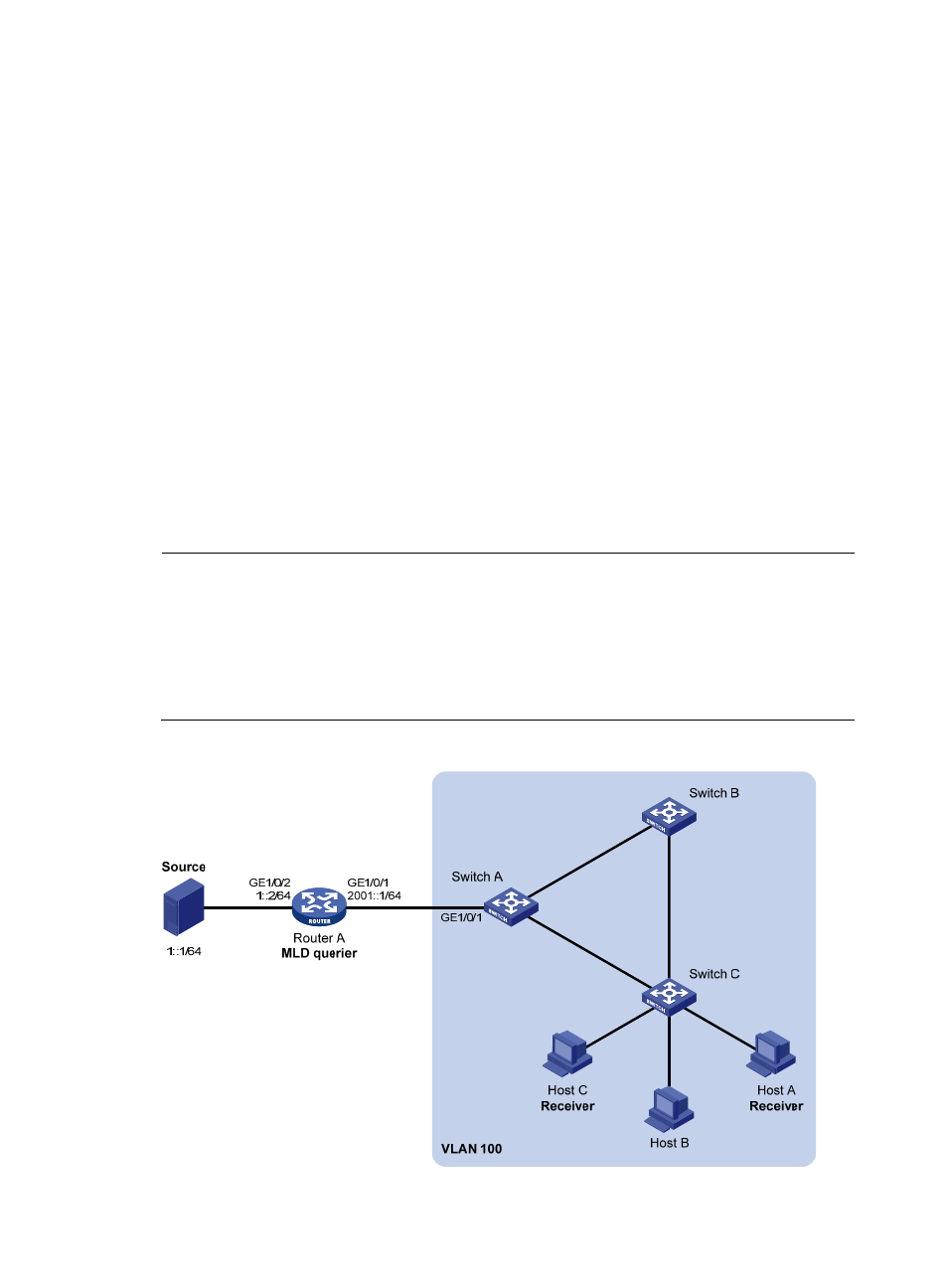Static port configuration example, Network requirements – H3C Technologies H3C S10500 Series Switches User Manual
Page 298

283
The output shows that GigabitEthernet 1/0/3 and GigabitEthernet 1/0/4 of Switch A have joined IPv6
multicast group FF1E::101.
Static port configuration example
Network requirements
•
, Router A connects to an IPv6 multicast source (Source) through
GigabitEthernet 1/0/2 and to Switch A through GigabitEthernet 1/0/1.
•
MLDv1 runs on Router A, and MLDv1 snooping runs on Switch A, Switch B and Switch C. Router A
acts as the MLD querier.
•
Host A and Host C are permanent receivers of IPv6 multicast group FF1E::101. GigabitEthernet
1/0/3 and GigabitEthernet 1/0/5 on Switch C are required to be configured as static member
ports for multicast group FF1E::101 to enhance the reliability of multicast traffic transmission.
•
Suppose STP runs on the network. To avoid data loops, the forwarding path from Switch A to Switch
C is blocked under normal conditions, and IPv6 multicast traffic flows to the receivers attached to
Switch C only along the path of Switch A—Switch B—Switch C.
•
Configure GigabitEthernet 1/0/3 on Switch C as a static router port, so that IPv6 multicast traffic
can flow to the receivers nearly uninterruptedly along the path of Switch A—Switch C in the case
that the path of Switch A—Switch B—Switch C becomes blocked.
NOTE:
•
If no static router port is configured, when the path of Switch A—Switch B—Switch C becomes blocked,
at least one MLD query-response cycle must be completed before the IPv6 multicast data can flow to the
receivers along the new path of Switch A—Switch C. Namely, IPv6 multicast delivery will be interrupted
during this process.
•
For more information about the Spanning Tree Protocol (STP), see
Layer 2—LAN Switching
Configuration Guide.
Figure 71 Network diagram for static port configuration
GE
1/0
/2
GE
1/0
/3
GE
1/0
/1
GE
1
/0/
2
GE
2/0
/1
G
E1/0/2
GE
1/0
/3
GE1/0/4
GE
1/0
/5